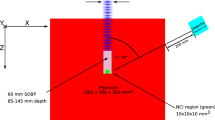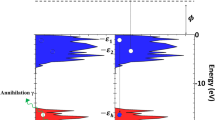Abstract
WE have made measurements of the position of the resonance levels of some heavy elements for slow neutrons. The method is a development of that of Preiswerk and v. Halban1, and depends essentially on finding how much paraffin must be traversed by neutrons in order to have their energy reduced from that of the resonance level of the element under investigation to that corresponding to known periods of silver or rhodium. In this way definite evidence has been obtained for resonance levels in cobalt, bismuth, lead, thorium, uranium, besides the known ones of silver and gold. The most interesting result is that two levels can be detected in bismuth, the first at about 1 volt, the second at about 11 volts. As bismuth is a pure element, both levels represent high excited states of radium E. Preliminary experiments with thorium and uranium give similar results, showing for thorium two levels, in the neighbourhood of 2 and 18 volts respectively, and for uranium levels about 5 and 30 volts. With cobalt we find a level at about 1 volt and nothing else of any intensity up to 40 volts. While it will require a careful study of the experimental conditions before these resonance energies can be fixed with certainty, we think these results give a trustworthy picture of the separation of energy levels in heavy elements. Such values are quite compatible with current theoretical ideas, as is also the suggestion of greater separation for the lighter element cobalt, and an increase in the separation as the first level goes to higher energies.
Similar content being viewed by others
Article PDF
References
Preiswerk and v. Halban, C.R., 201, 722 (1935).
Michiels, NATURE, 142, 431 (1938).
Ruben and Libby, Phys. Rev., 51, 774 (1937).
Author information
Authors and Affiliations
Rights and permissions
About this article
Cite this article
DOWNING, A., ELLIS, C. Resonance Absorption of Slow Neutrons. Nature 142, 793 (1938). https://doi.org/10.1038/142793a0
Issue date:
DOI: https://doi.org/10.1038/142793a0



